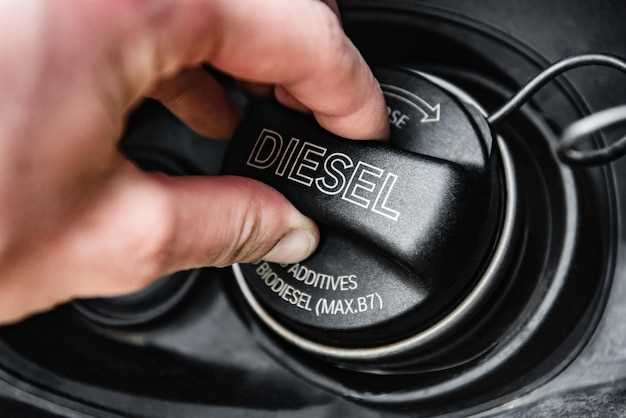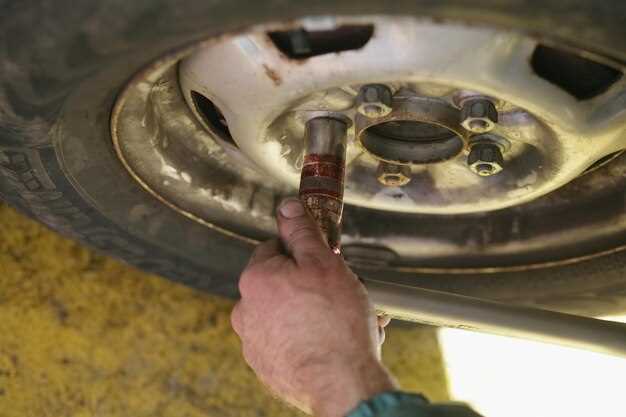
The reliable performance of a Toyota Land Cruiser heavily relies on the proper maintenance of its moving parts. These components work tirelessly under various conditions, requiring regular attention to ensure longevity and efficiency. Lubrication plays a crucial role in this process, reducing friction and wear while enhancing the overall function of the vehicle.
Understanding the specific moving parts that benefit from lubrication is essential for every Land Cruiser owner. Components like the engine, transmission, and suspension systems all contain intricate moving parts that require appropriate lubricants to perform optimally. Neglecting these areas can lead to significant issues, compromising both safety and vehicle lifespan.
Using the correct type of lubricant is just as important as the act of lubrication itself. Different parts may require specific formulations, ranging from motor oils to grease, to ensure they operate smoothly. Regularly checking and maintaining these lubricated areas helps prevent degradation, ultimately keeping your Land Cruiser running like new.
Identifying Key Lubrication Points in Your Land Cruiser
Maintaining the moving parts of your Land Cruiser is essential for optimal performance and longevity. Proper lubrication reduces friction, minimizes wear, and ensures that components operate smoothly. Here are the key areas to focus on:
1. Suspension System: The suspension system is made up of various moving parts, including shock absorbers, struts, and bushings. Ensure that you regularly lubricate these components to maintain a comfortable ride and improve handling. Pay attention to the control arm bushings and sway bar links.
2. Wheel Bearings: Wheel bearings are critical for smooth wheel rotation. Regularly inspect and lubricate them to prevent overheating and premature failure. This is particularly important for off-road conditions where dirt and debris can exacerbate wear.
3. Driveshaft and Universal Joints: The driveshaft connects the transmission to the rear axle and contains universal joints that allow flexibility as the vehicle moves. Proper lubrication of these joints is vital to prevent noise and increase longevity.
4. Engine Components: Key moving parts in the engine, such as camshafts, crankshafts, and timing chains, require consistent lubrication. Regular oil changes using high-quality motor oil will keep these parts functioning without friction-related damage.
5. Chassis and Underbody: The chassis supports various moving components. Apply grease to the grease fittings on the chassis, including the steering system and control arms, to maintain optimal movement and prevent rust.
6. Brake Components: Lubricating the brake calipers and sliding pins ensures smooth operation and prevents sticking. Use appropriate high-temperature brake lubricant for longevity.
By regularly identifying and servicing these lubrication points, you will enhance the performance and durability of your Land Cruiser, ensuring that it remains in excellent running condition for years to come.
Choosing the Right Lubricants for Optimal Performance

Selecting the appropriate lubricants for the moving parts of a Land Cruiser is crucial for maintaining its performance and longevity. The right lubricant reduces friction, minimizes wear, and protects against rust and corrosion. Understanding the various types of lubricants available ensures you make an informed choice tailored to specific components.
First, consider the type of lubricant needed for different moving parts. Engine oil, for instance, is specifically formulated for the high temperatures and pressures found within an engine. Look for synthetic oils, as they provide superior protection and performance compared to conventional options. Gear oils are essential for the transmission and differentials, offering enhanced protection under heavy loads and improving shifting performance.
Next, examine the viscosity rating of the lubricant. It is vital to select a lubricant that matches the manufacturer’s specifications, as this impacts the fluid’s ability to flow and provide adequate coverage to moving parts. The viscosity index indicates how the lubricant behaves under varying temperature conditions, making it critical to choose one with proper performance in both hot and cold environments.
Additionally, consider the specific additives contained in the lubricant. Certain additives can enhance the oil’s properties, such as detergents that clean engine components, anti-wear agents that prolong part life, and friction modifiers that improve overall efficiency. Always look for lubricants that are compatible with your vehicle’s requirements and provide targeted protection for its moving parts.
Regular maintenance, including timely lubricant changes, is essential for optimal performance. Replace old lubricants with the selected products to ensure that all moving parts operate smoothly and efficiently. Monitoring the condition of lubricants also helps detect any issues before they escalate, allowing for timely interventions and extended vehicle health.
Step-by-Step Guide to Lubricating Your Land Cruiser’s Components

Step 1: Gather Necessary Tools and Materials
Before you begin the lubrication process, ensure you have all essential tools at hand. You will need high-quality lubricants, grease guns, rags, a torque wrench, and a selection of sockets. This preparation sets the stage for an effective maintenance routine.
Step 2: Identify Moving Parts in Your Land Cruiser
Familiarize yourself with the various moving components that require lubrication. Key areas include the drivetrain, suspension parts, brakes, and steering mechanism. Regularly inspect these parts to understand where lubrication is needed.
Step 3: Clean the Components
Prior to applying lubrication, clean the moving parts thoroughly. Wipe away dirt, grime, and old lubricant using a rag. This ensures that the new lubrication adheres properly and prevents contaminants from causing wear and tear.
Step 4: Apply the Lubricant
Using a grease gun or an appropriate applicator, apply the lubrication to the specified moving components. Take care to follow the manufacturer’s recommendations for the type of lubricant and the amount required for each part. Over-lubricating can lead to excess buildup and attract dirt.
Step 5: Check for Proper Movement
After applying lubrication, manually check the movement of the components. Ensure that each part moves smoothly without any resistance. This step is crucial to ensure that the lubrication has effectively penetrated the areas it’s meant to protect.
Step 6: Inspect for Leaks and Excess Lubrication
Once lubrication is completed, inspect the components for any leaks or excess lubricant that may need to be wiped away. Remove any visible excess to prevent dirt accumulation and ensure optimal performance.
Step 7: Document the Maintenance
Keep a maintenance log documenting the date, components lubricated, and type of lubricant used. This documentation helps track your Land Cruiser’s maintenance history and reminds you when the next lubrication service is due.
Step 8: Regularly Repeat the Process
Establish a routine for lubrication, ideally checking moving parts every few months or as recommended by your vehicle’s manual. Regular maintenance prevents wear and enhances the performance and longevity of your Land Cruiser.
